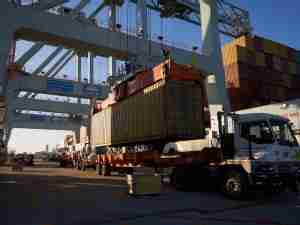WASHINGTON - Total transportation construction and related market activity is expected to grow 1.3 percent in 2017, driven largely by increases in highway and bridge private construction activity supporting residential and commercial developments, according to the American Road & Transportation Builders Association’s (ARTBA) chief economist.
Dr. Alison Premo Black will release her full forecast on Friday, Dec. 2, during a 60-minute webinar for analysts, investors, transportation construction market executives, public officials and the news media.
In 2017, the market is expected to reach $247.8 billion, up from $244.5 billion in 2016, according to Black. This includes public and private investment for highways, bridges, public transit, rail, ports and waterways, airport runways and terminals, as well as private investment for roads, streets, driveways and parking lots in residential and commercial developments and support work by state departments of transportation (DOTs) and local governments for highway and bridge planning and design work, routine maintenance and right of way purchases.
Black notes that although the December 2015 enactment of the federal “Fixing America’s Surface Transportation (FAST) Act” law provided stability for public highway investment, the increases that will be realized in the federal program funding levels are modest, just above anticipated growth in inflation and project costs.
Many state DOTs did not obligate their federal funds in time for many projects to get started during the 2016 construction season, she says. Nearly half of the FAST Act funds for FY 2016 —46 percent—were obligated in the last quarter of the federal fiscal year, between July and September 2016. Twenty percent of the federal funds available to the states were not obligated until September 2016.
Another factor impacting the ARTBA forecast, Black says, is that Congress is expected in December to pass a “continuing resolution” that would hold all FY 2017 federal discretionary spending—including the transportation programs—at the current level until March 31, 2017.
Under this approach, the $900 million increase in highway investment authorized by the FAST Act and included in the House and Senate FY 2017 transportation funding bills would be delayed at least until next spring. Similarly, the $510 million to $670 million public transportation funding increases in the House and Senate transportation measures would also be delayed. The existing funding levels for these and other programs would continue.
Other ARTBA forecast highlights by mode:
Public & Private Highway, Street & Related Construction
- After two years of real growth, the value of public highway, street and related work by state DOTs and local governments fell nearly 2 percent in 2016 and is expected to decline another 1 percent in 2017.
- Recent increases in state gas taxes and user fees, as well as a number of local funding initiatives approved on the Nov. 8, 2016, ballot, should help support some local markets over the next few years. Voters in 24 states approved 267 ballot measures in 2016, which will support $207 billion in highway, bridge, port and transit spending over the next 40 years.
- Public-private partnerships will continue to be important to state and local markets that have revenue streams to support these projects, according to ARTBA. Five major projects came to financial close in 2016, totaling over $3.3 billion in investment. The projects were in Arizona, Washington, Georgia, Texas and Virginia.
- Based on historical data, the private highway, bridge, parking lot and driveway markets will increase from $58.9 billion in 2016 to $62.5 billion in 2017, and will continue to grow over the next five years as overall construction activity increases in those sectors.
Bridges & Tunnels
- The public bridge and tunnel construction market is expected to be down slightly in 2017, to $32.9 billion from a record $33.3 billion in 2016, before resuming real growth in 2018 and beyond.
- The national outlook is being driven by activity in nine states, which accounts for 53 percent of the market: California, Florida, Illinois, New Jersey, New York, Pennsylvania, Texas, North Carolina and Ohio. Recent contract awards are down in many of these states, in part because of some major projects that got underway in 2015.
Railroad, Subway & Light Rail
- Public transit and rail construction is expected to grow from $19.3 billion in 2016 to $20.3 billion in 2017, a five percent increase.
- Subway and light rail investment is expected to grow 3.7 percent to $7.7 billion, just below the record level of $7.8 billion in work that was set in 2015.
- The FAST Act provided a boost for public transportation investment. In addition to a dozen major subway and light rail projects underway, there were four new construction starts in 2016, including work in Washington state, Washington, D.C., Texas and California.
Airport Terminals & Runways
- The value of airport construction will grow slightly, increasing from $13.1 billion in 2016 to $13.2 billion in 2017, according to the forecast model.
- Airport terminal and related work is expected to increase from $8.3 billion in 2016 to $8.4 billion, an increase of 1.5 percent.
- Runway work is forecasted to remain flat at $4.8 billion.
Ports & Waterways
- Port and waterway investment is expected to be $2.1 billion in 2017. Construction activity in 2016 was also $2.1 billion, down from $2.3 billion in 2015.
- If Congress completes final action in 2016 on the Water Resources Development Act, which identifies nearly $9 billion in navigation, flood control and environmental restoration projects that are eligible for Congress to fund, it could help boost the market sector. In its current form, the bill would authorize dredging projects in eight ports to deepen navigation channels.

_-_28de80_-_9b2f972cdce64d5f7c8d952d74a16521db70a589_yes.jpg)






